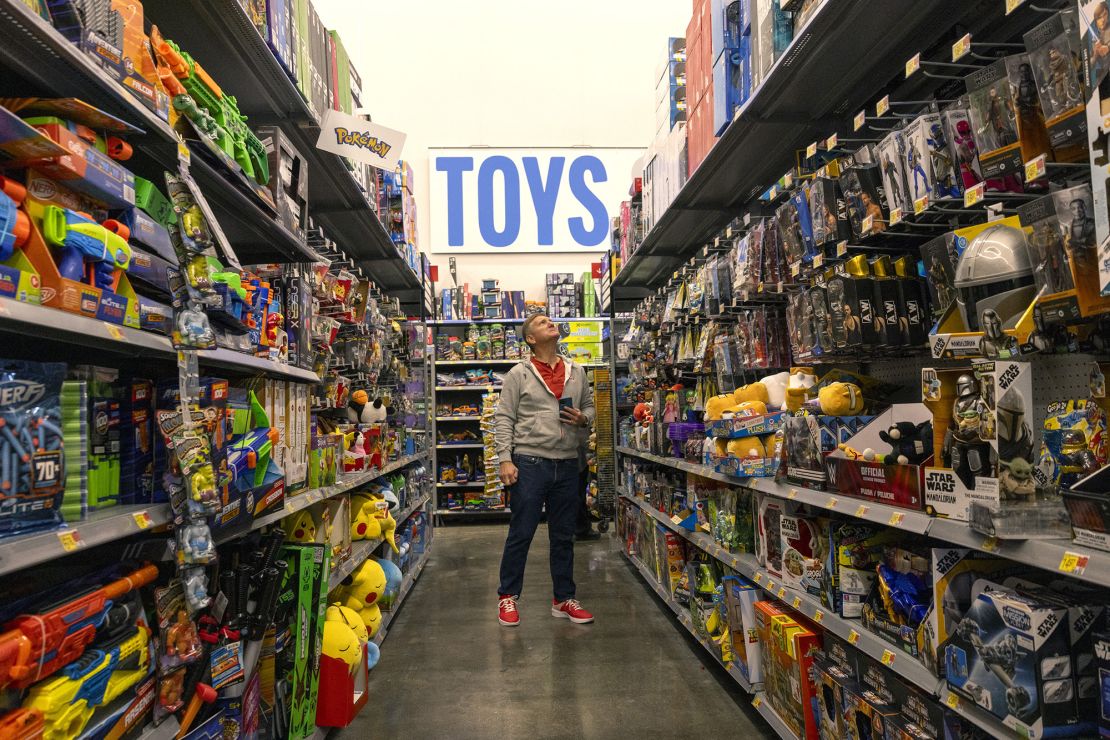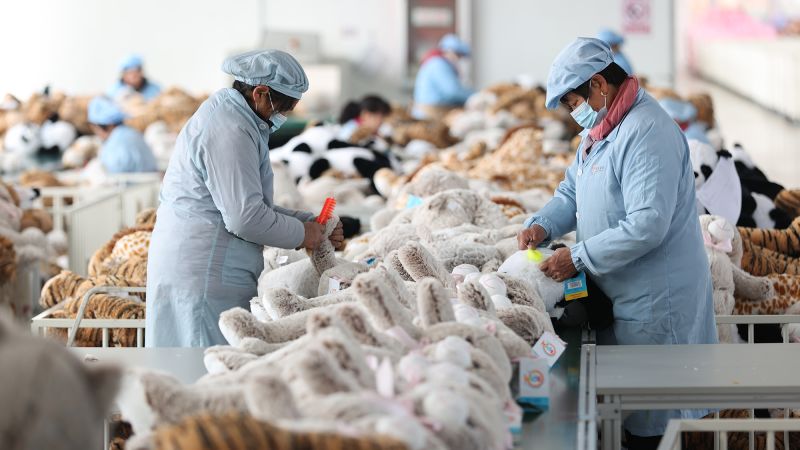CNN
—
Toys made in China have been exempt from tariffs since President Donald Trump’s first term. That is no longer the case.
Last month, Trump raised tariff rates on China to 20%, dealing a big blow to the toy industry. But he didn’t stop there. Just a few weeks later, Trump was set to tack on an additional 34% “reciprocal” tariff. Then he tacked on another tariff, and another, and another.
Now, goods from China are being tariffed at a whopping 145% rate — and that number will likely keep growing as Beijing vows to continue retaliating against new tariffs and Trump threatens to do the same.
For American families, this means relatively inexpensive toys could become luxuries. That’s because nearly 80% of all toys sold in the US are manufactured in China, according to the Toy Association, a leading industry group.
“We have no choice but to increase our prices by high double digits,” said Isaac Larian, CEO of California-based MGA Entertainment, which makes Bratz and L.O.L. Surprise! Dolls, among several other toys. “The life of my business, 46 years, is on the line.”
Trump said that one of his main impetuses for enacting higher tariffs is to bring manufacturing jobs back to the US. Yet Larian said China’s 125% retaliatory tariffs on US exports are going to force him to lay off American workers at his Hudson, Ohio, factory, which has around 700 employees in total. That’s because many goods manufactured there are shipped to China.
While the majority of MGA’s production remains in China, its Ohio factory produces much of its Little Tikes line of goods, including toy cars and sandboxes. The facility could manufacture more toys, but Americans “do not want to work in factories,” he said.

Even if finding more workers weren’t an issue, it would still cost more for the US factory to manufacture the toys that are currently being produced in China, even with the current tariffs in place, he said. Moreover, it’s particularly challenging to source the raw materials needed to make doll hair domestically.
“There is no American factory anywhere that can make hair for dolls. What am I supposed to do? Sell bald dolls?” Larian said.
Larian’s reasons for sticking with China are not unique.
While many industries, including ones that were also previously exempt from Chinese tariffs, have shifted much of their production away from China, it has remained — by far — the top source of foreign-produced toys sent to the US.
Of the nearly $17.7 billion worth of toys the US imported last year, 75%, or $13.4 billion worth, came from China, according to US Commerce Department data.
“This goes back to the ’80s and early ‘90s” when companies were scouting out lower-cost destinations to manufacture toys, said Greg Ahearn, president and CEO of The Toy Association.
China has much lower labor rates compared to many other parts of the world, which has helped keep costs down for making toys and lowered prices for consumers, Ahearn told CNN. And, even with recent technological upgrades, toy production still involves hand labor, he said — for instance, painting doll faces and action figures.

Furthermore, many toy manufacturers are considered small businesses. It’s much easier for them to tap in to the existing infrastructure in China than to build factories in the US from scratch, he said.
“There is no alternative in the short run. Yes, there is manufacturing that is done here in the US, but those are mainly things that can be highly automated,” said Ahearn, who previously was the chief marketing officer at Toy “R” Us.
Jay Foreman, CEO of Basic Fun!, a toy company that makes Care Bears and Tonka trucks, told CNN in a February interview right after Trump enacted a 20% tariff on China that his entire supply chain is in China.
“Our tooling, our factory base, the consistency of production — and how do you just up and leave and go to another market?” Foreman said. “There are things you aren’t able to make (in the US) physically, or produce here, and toys are one of those.”
Speaking with CNN again after the 145% tariffs were enacted, he said: “The situation… has gone from a problem to a crisis for Basic Fun! and our entire industry. This threatens not only the price and amount of toys that will be in the market, but the actual survival of our industry.”
It’s a situation many toy companies are confronting, especially now when they’d otherwise place holiday season orders. The loss of revenue means several “may not be able to stay in business,” Ahearn told CNN.
Basic Fun! has paused all toy shipments, putting itself in a potentially dire situation. “We cannot afford to take the risk of not knowing what the tariff will be when the goods land,” Foreman said.
But at the same time, he said, “if we have no product, we have no cash flow, and that means no money to pay bills.”


